Ginza, Tokyo - Kanto
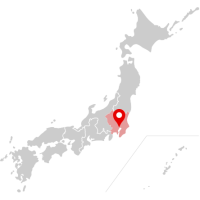
While you are in Tokyo hop aboard a subway train and head for Ginza, home of designer boutiques, elegant eateries, and the bakery responsible for adding bread to the culinary landscape of Japan.
Although bread first came to Japan with Portuguese missionaries and traders in the sixteenth century, it disappeared from the archipelago with Japan’s seventeenth-century policy of isolation. When it was reintroduced in the nineteenth century, it was in the form of a hard bread and failed to win over Japanese consumers—that is, until a baker named Kimura Yasubei thought to adjust the flavor and texture of the bread to better suit the Japanese palate. The result was sakadane anpan, a soft bun stuffed with sweet bean paste, which took off in no time.
Take a trip to Ginza’s bustling Chuo Street, and try for yourself the treat that set the country on the gluten-rich road to becoming a bread-loving nation.
Serving Ginza for 150 Years
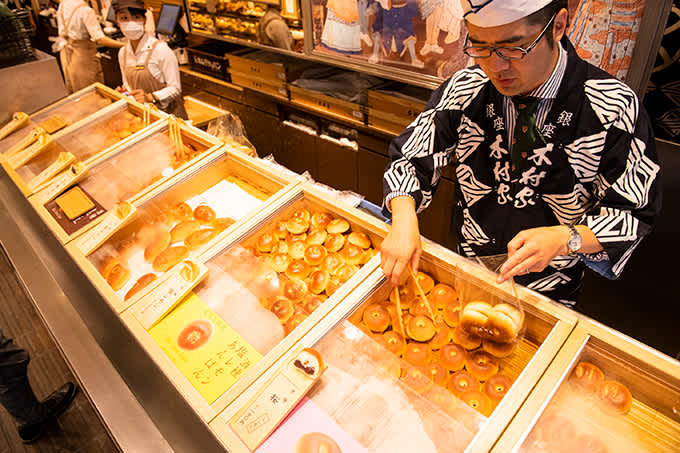
The Ginza Kimuraya building rises eight stories high, surrounded by some of Tokyo’s most venerable shops. Ginza Kimuraya itself has a history that stretches back 150 years, although it hasn’t been easy going that whole time.
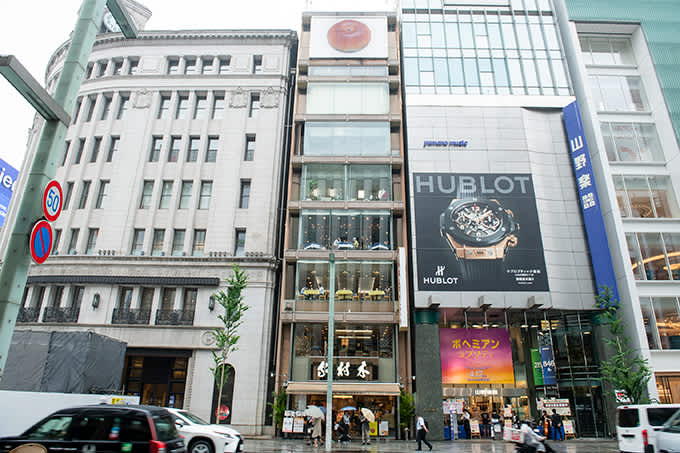
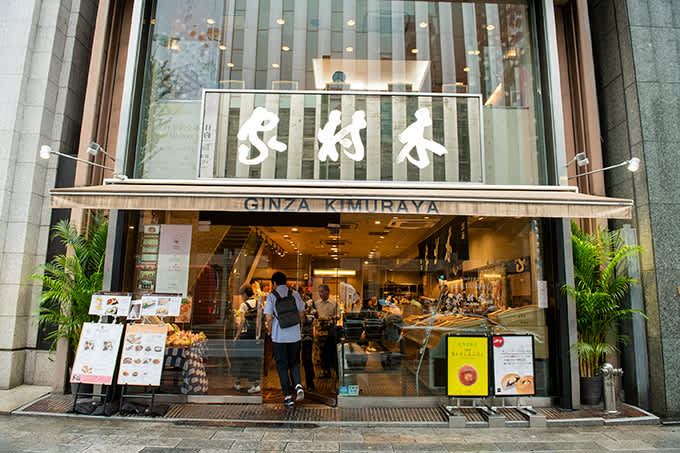
The bakery’s predecessor, called Bun’eido, was established by Kimura in 1869 near what is now Shimbashi Station. A building fire the next year led to a move and a new name, Kimuraya. Unfortunately, in 1872 tragedy struck again in the form of another fire. Not deterred, Kimura and his second son, Eizaburo, soldiered on, reopening in 1874—this time at their current location and with the name Ginza Kimuraya.
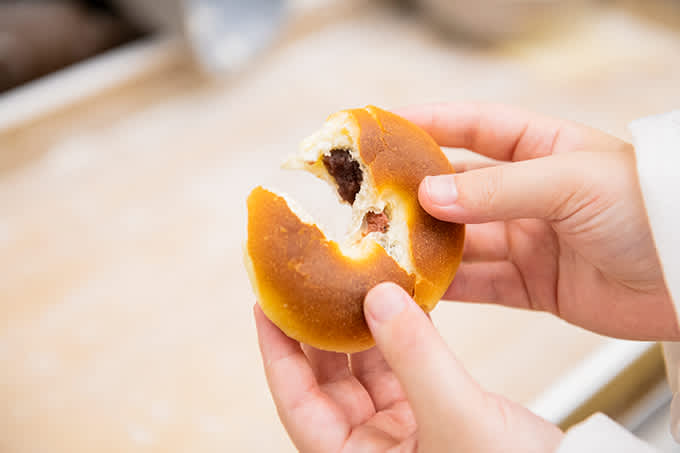
That same year, the bakery introduced what would become its signature product: sakadane anpan. The bread, which uses sakadane (a natural leavening made from rice), koji rice (malted rice), and water, was an immediate hit—finding favor even with Emperor and Empress Meiji. Its popularity continues today at the building’s first-floor bakery.
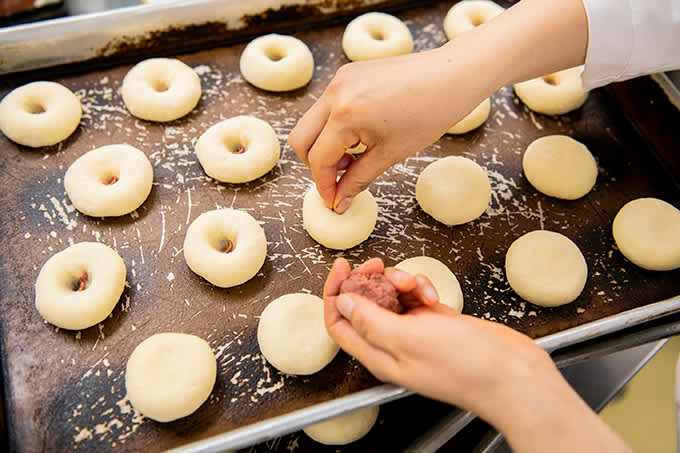
Freshness Guaranteed
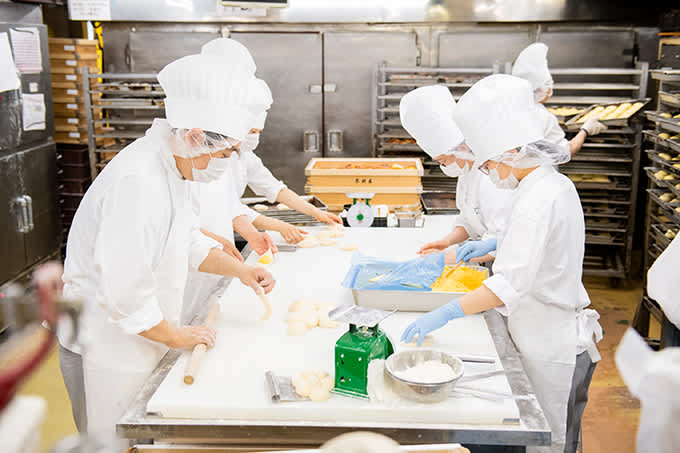
Bread is baked on-site throughout the day, so no matter what time you arrive, you’ll be in for a freshly baked treat. Serving bread while still warm is something Ginza Kimuraya prides itself on.
Before the shop opens in the morning, between 7:00 and 8:00, buns have already been made. Bread-making takes place on the seventh and eighth floors of the building, so the baked bread has only a short journey to reach the first-floor sales counter or the second-floor café.
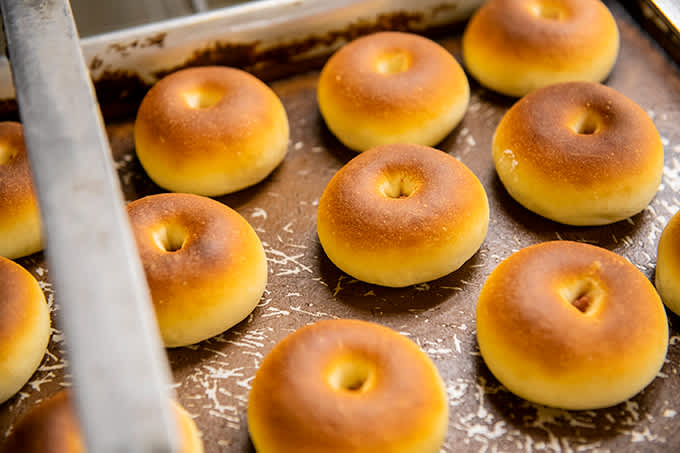
Each day, a whopping five thousand buns are made. On weekends, the number rises to ten thousand. To reach such incredible numbers, there are always about ten bakers busy at work, making the buns by hand.
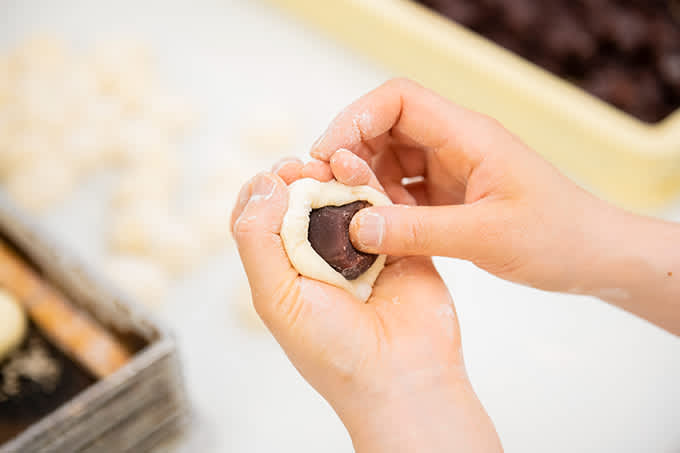
Original Recipe, Original Flavor
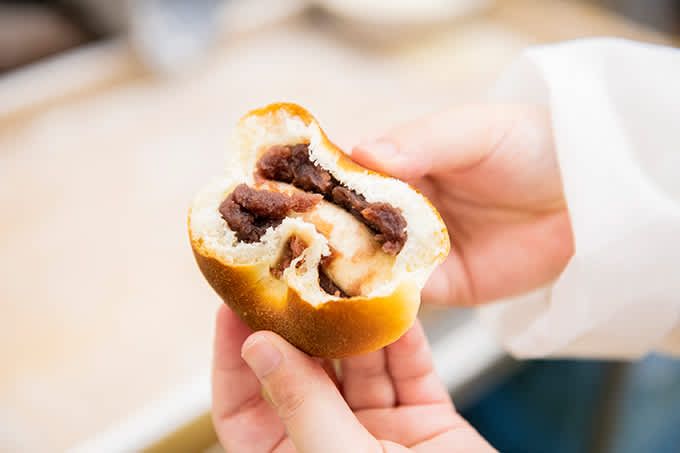
Making sakadane anpan is a labor of love, since preparing the sakadane alone takes approximately eleven days and requires close attention.
The production-division section chief, Mizutani Kenji, explains that the sakadane requires more care than other leavening agents. “But the flavor is good,” he says, “and it makes bread soft the way Japanese folks like it. Our methods haven’t really changed since sakadane anpan was first created.”
The care that goes into making the sakadane is extended to the bread’s other ingredients and methods as well. The flour is an original blend made especially for sakadane anpan, while the azuki beans that are used to make the anko (sweet bean paste) are carefully selected from Tokachi, Hokkaido.
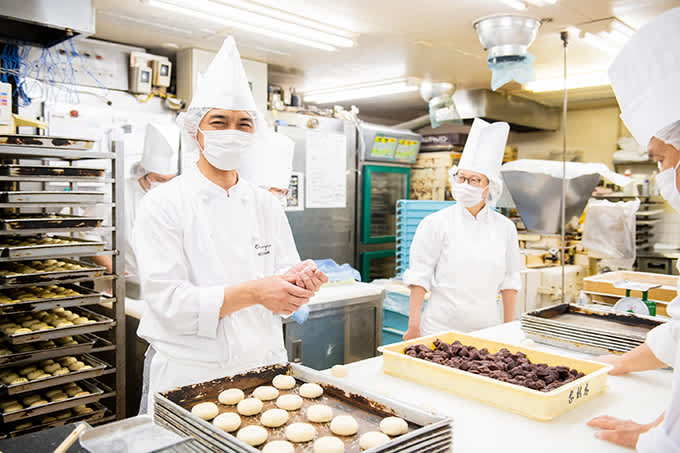
The bread is also made barehanded, which allows bakers to notice the smallest changes in the dough. When the bakers wear gloves, those changes can go unnoticed, and the bread suffers as a result.
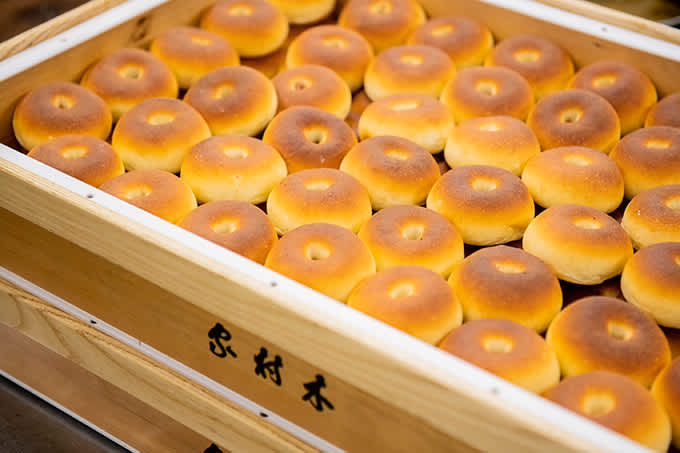
Once baked, sakadane anpan is transferred to wooden trays, which absorb just the right amount of moisture to prevent condensation forming on the steaming-hot bread. This ensures that they are presented to customers in perfect condition. It is this attention to detail more than anything else that typifies Japanese the best in Japanese bread.
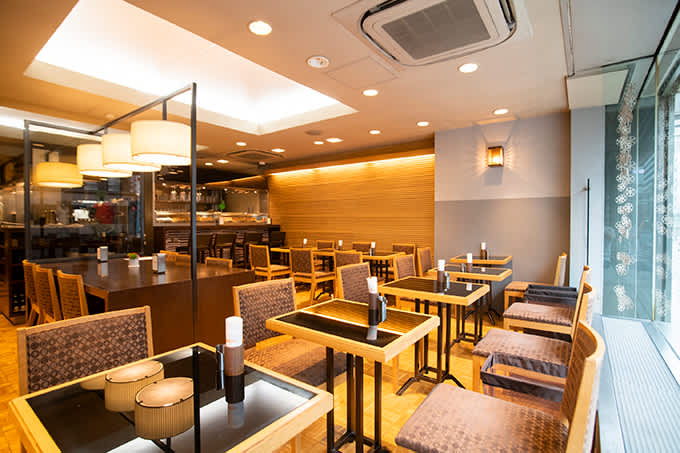
Rest and Refuel in the Café

Sit back and relax at Ginza Kimuraya Kissa, the café located on the second floor of the building. Bread baked on the seventh and eighth floors are whisked downstairs for customers to enjoy in the café. In addition to sakadane anpan, beverages and light fare, such as sandwiches, cakes, and pies, are available.
If a small meal is all you need, order the anpan set, which consists of the standard ogura anpan, made with coarsely mashed sweet bean paste; sakura anpan topped with a salt-pickled cherry blossom; and tea or coffee. Savor the still-warm buns, buttery and sweet, and the richer sweetness of the bean paste.
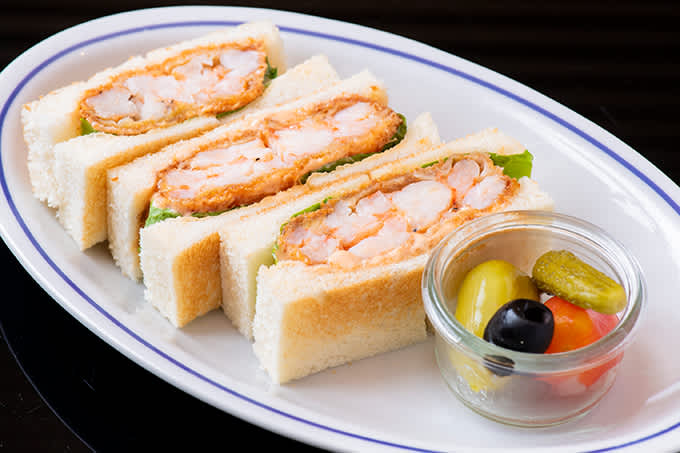
For a proper meal, go with the café’s most popular item: ebikatsu sandwiches. Made with breaded shrimp, the sandwiches are substantial in size but with a texture that is tender and moist. Subtly sweet and served with a rich and perfectly tangy aurora sauce, the sandwiches are a delicious way to fill up before you hit Ginza.
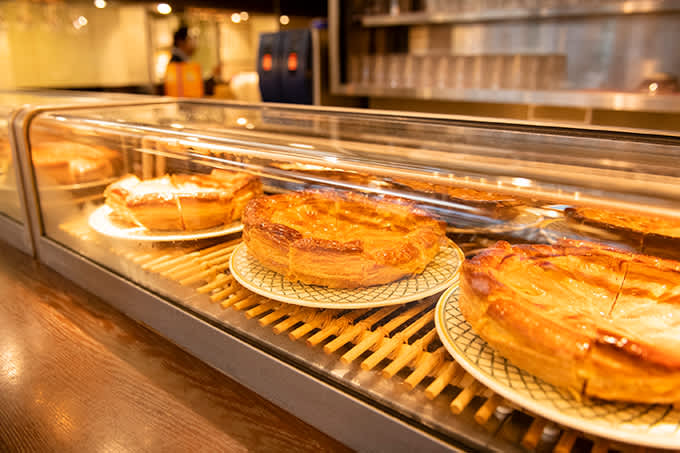
Need more dessert? Try the anko pie, a pastry stuffed full of sweet bean paste. This pie is available only in the café, so if you’ve got a sweet tooth, be sure to enjoy a slice of this sugary goodness while you’re there.
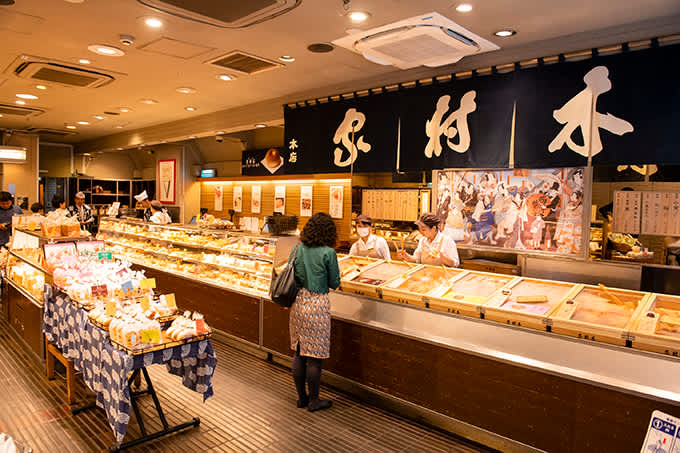
The Bakery and Beyond
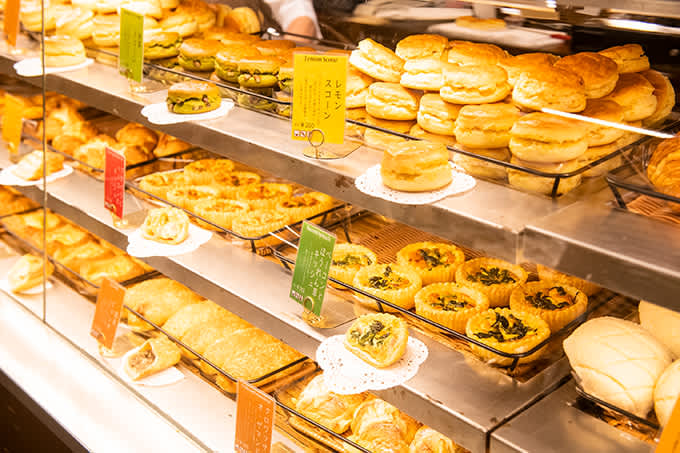
More than 120 varieties of bread line the shelves of the first-floor bakery. Anpan, pastries, and other breads brought down fresh from the upper floors are displayed there in all their warm splendor.
The service at Ginza Kimuraya always comes with a smile. And you are greeted with a friendly “Welcome!” when you arrive and sent off with a heartfelt “Thank you!” when you leave. Cheerful greetings fly across the shop floor, where the atmosphere buzzes with energy. Between the service and the bread quality, you can’t go wrong at Ginza Kimuraya.
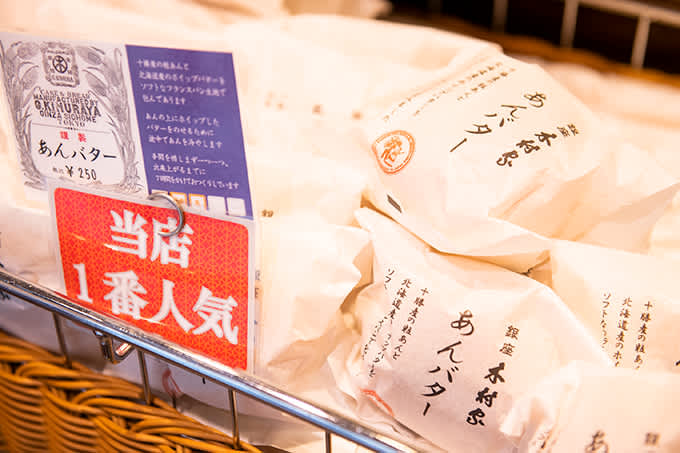
But what about later, after you’ve left the neighborhood? You’ll be happy to hear that Kimuraya creations are available at twenty-five stores in the Kanto region, which includes the vast Greater Tokyo Area. The bread sold in these stores is made using different recipes. It is sold under the Kimuraya Sohonten brand and made for a longer shelf life and to meet transport requirements. But you’re still guaranteed top-notch flavor, and the products are a great way to enjoy quality Kimuraya bread outside of the Ginza area.
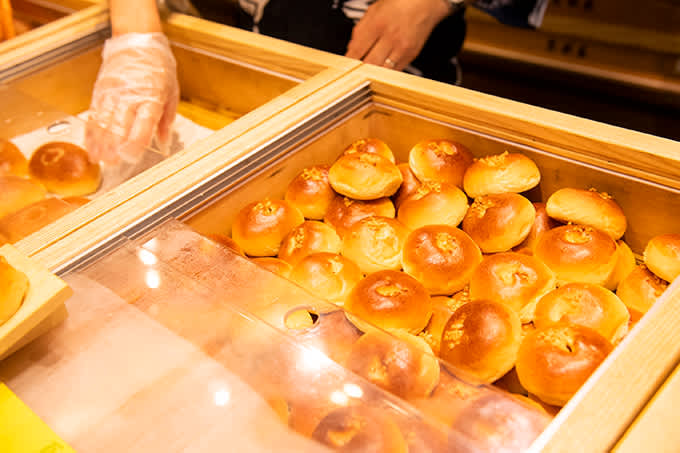
Taste a piece of Japan’s culinary history with a visit to Ginza Kimuraya. Though the country may be better known for rice than for foods made with wheat, it has created its own delicious world of bread—all thanks to the unrelenting efforts of Kimura Yasubei and his son, Eizaburo. Delight in the soft, subtly sweet breads traditionally favored by the Japanese at Japan’s oldest bakery—Ginza Kimuraya.
Contact Information
Ginza Kimuraya
4-5-7 Ginza, Chuo Ward, Tokyo 104-0061
Ginza Kimuraya Kissa
Ginza Kimuraya 2F, 4-5-7 Ginza, Chuo Ward, Tokyo 104-0061
How to Get There
Ginza is located in Tokyo’s Chuo Ward. Ginza Kimuraya can be found mere steps from the A9 exit of Ginza Station, which is served by three Tokyo Metro lines.
Recommended Itineraries
Ginza is most famous for its luxury boutiques and high-end eateries, but it’s also home to simpler pleasures. Enjoy the area’s many art galleries, such as Tokyo Gallery + Beijing Tokyo Art Projects and the Pola Museum Annex, or spend a few hours admiring the art of kabuki at Kabukiza, the Tokyo theater where kabuki performances are held nearly every day. There’s also the Police Museum, where you can discover the world of Japanese policing. Relax with a stroll around the grounds of Hamarikyu Gardens, complete with a tea house, or wander through nearby Hibiya Park and the gardens that surround the Imperial Palace.
Related Links
Tokyo Ginza Official (English)
Ginza Stroll, Ginza Kimuraya (English)
Ginza & Nihonbashi (English)
Tokyo (English)
Map
Featured Cuisine
Sakadane anpan is a variety of Japanese bread roll created by Ginza Kimuraya. Made with sakadane (a natural leavening agent made from rice), koji rice (malted rice), and water, this bread has a soft texture and subtle sweetness. In the middle of the bread roll is a dollop of anko, a sweet bean paste made from azuki (a variety of red mung bean). The first bread to become popular in Japan, its creation laid the foundation for today’s booming Japanese bakery culture.
-
Author
Author: Helen
Helen hails from a small town in Central Canada. Shortly after completing an honors degree in history, a desire to study karate in its birthplace drew her to Japan. Since arriving in 2006, she has earned her second dan in Goju-ryu karate, fallen head-first into Japanese culture by way of cross-cultural marriage, and written about Japan for a variety of publications. She loves traveling by Shinkansen, curling up under a heated kotatsu blanket, and eating anything with mochi.
All information is correct as of the time of writing.
Please check for the latest information before you travel.






















































